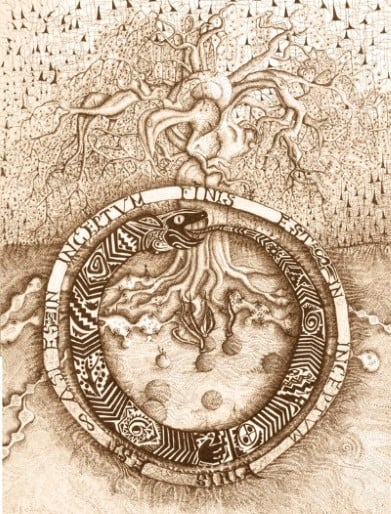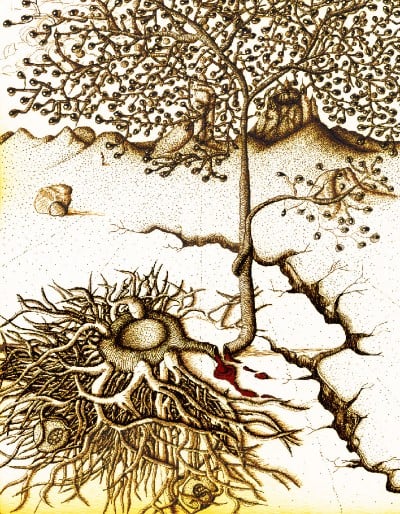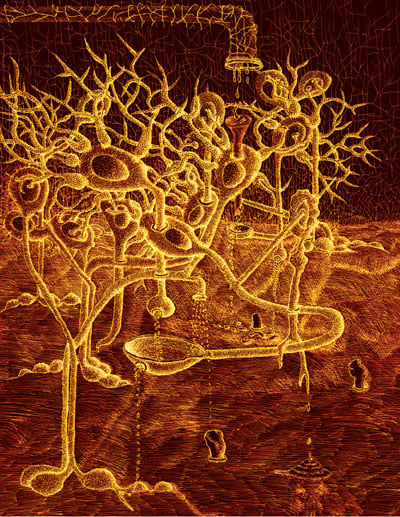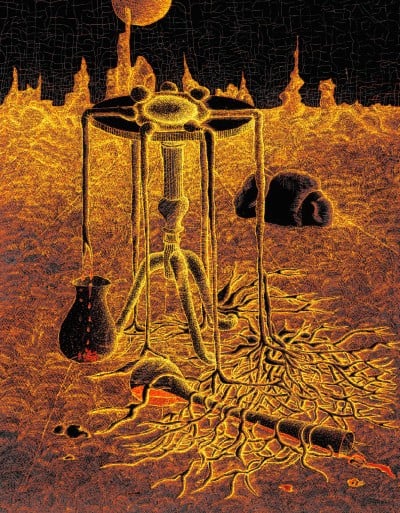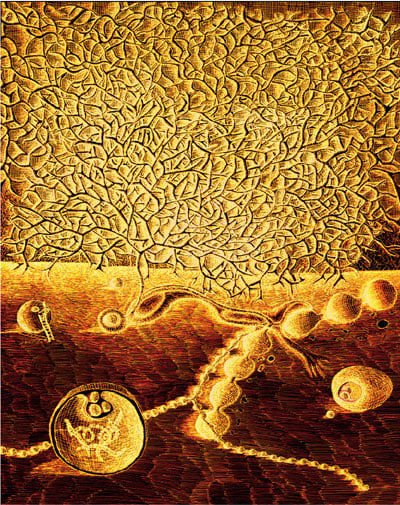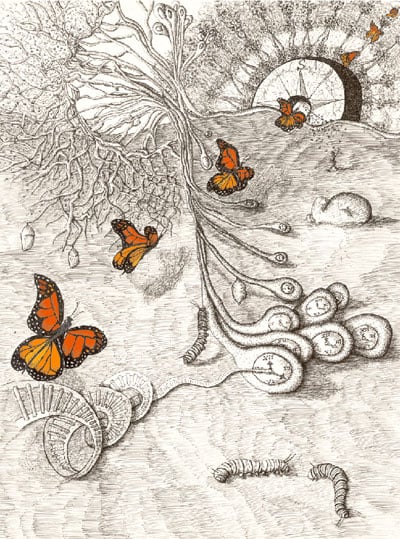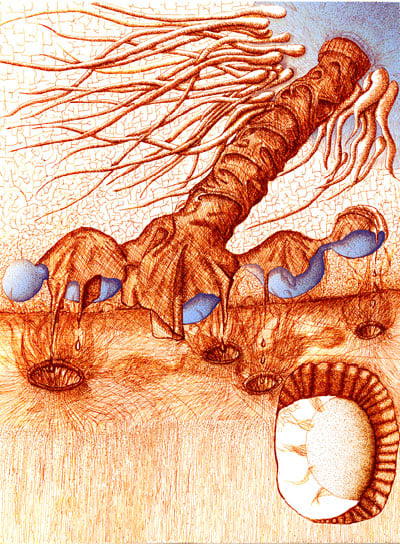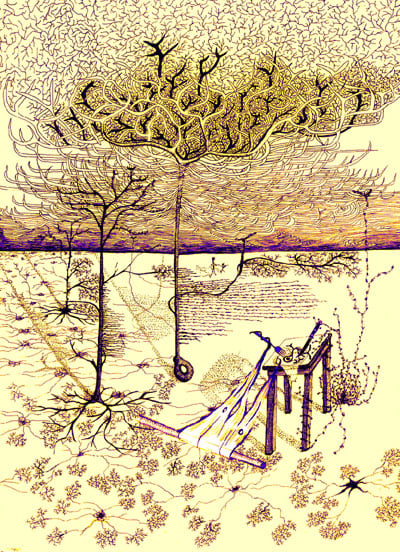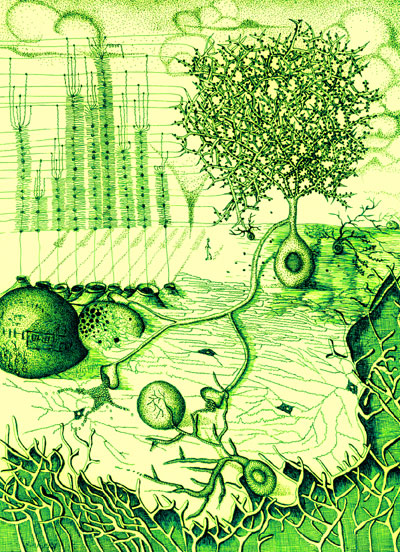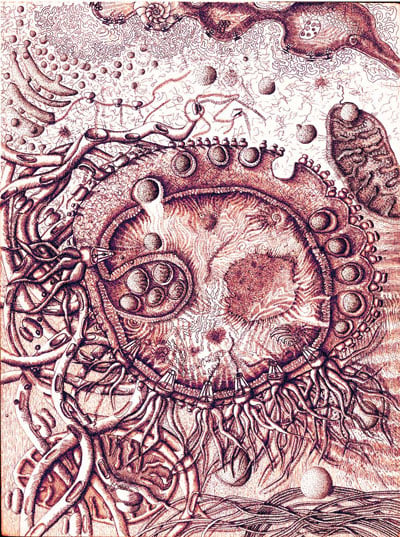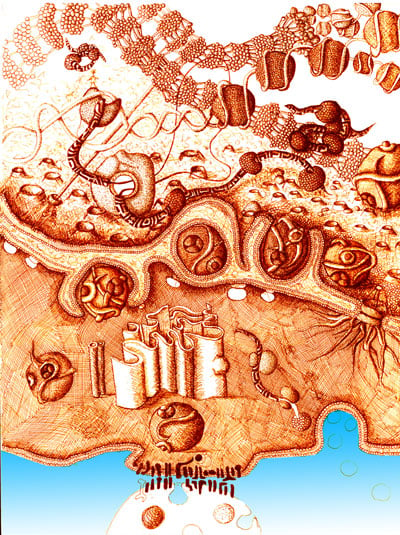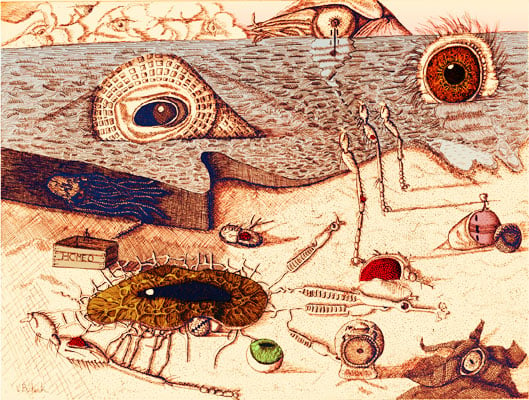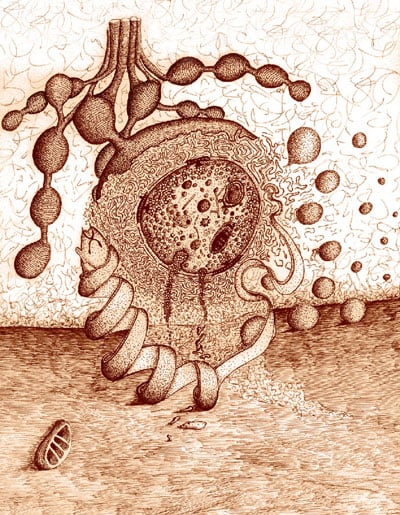Brainscapes by Vivian Budnik
In inceptum finis est
Caption: "In inceptum finis est" ----"in the beginning is the end"---- The snake bitting its tail ("ouroboros') is an ancient symbol used in many cultures, to indicate the circularity of life processes. In this paper (Korkut et al, (2013). "Regulation of postsynaptic retrograde signaling by presynaptic exosome release." Neuron 77: 1039-1039) we find that retrograde signals are also circular. The end is the retrograde signal, but the beginning is the release of Syt4 by presynaptic cells. Drawing in black ink, modified using Image J software. Cover of Neuron (2013)77. |
Defeating axon death |
|
|
|
Distilling the signal |
exosome harvest |
The great nuclear escape
Caption: "The great nuclear escape" Nuclear pore complexes (NPCs) have long been assumed to be the sole gateway for macromolecular transport in and out of the nucleus. Speese et al. (Cell (2012) 149: 832-846) provide evidence that, during Wnt-regulated synapse development, large ribonucleoprotein (RNP) granules carrying postsynaptic mRNAs are exported out of the nucleus through an alternative mechanism. The granules bud through the nuclear envelope. Although this mechanism has been previously demonstrated for the nuclear egress of herpes-type viruses, Speese et al. now suggest that exit through nuclear envelope budding is an endogenous mechanism for the export of large RNPs. The drawing, “Searching the way out of the nucleus,” represents a long journey through “brainscapes,” searching for a route out of the postsynaptic nucleus. In the end, the only way out was budding across the nuclear envelope. Ink drawing by Vivian Budnik, modified using ImageJ software. Cover issue. |
migration
Caption: "Migration" To Steven Reppert. An ink drawing of monarch butterflies migrating through their genetically programmed “internal” landscape. Each fall, millions of monarchs migrate from eastern North America to their overwintering grounds in central Mexico. In this issue, a highly efficient gene-targeting approach, using zinc-finger nucleases, is used to define an essential transcriptional repressor as part of the genetic basis of the long-distance monarch migration, where an intact circadian clock is necessary for proper sun compass navigation. (Cover illustration by Vivian Budnik. [For details, see Merlin et al,Genome Research (2013) 21: 159–168.]) |
glia
caption: |
glial feast
Caption: |
in search of my memories
Caption: "In search of my memories" The changes in synaptic connec |
all eyes on you
caption: |
a side door at the nuclear envelope
caption: |
nuclearscape
caption: "Nuclearscape": an explanation to HHMI To Melissa Moore for her HHMI renewal. Large RNA–protein particles exit the nucleus by fusing with and budding through the nuclear envelope. |
The eye and the homeobox
in inceptvm finis est |
Synaptic intimacy
Wnts have emerged as critical, evolutionarily conserved signals for synapse maturation and synaptic plasticity. Korkut et al. (pp. 393–404) show that the Drosophila Wnt Wingless is transported across the synapse through the use of an exosome-like vesicle containing the Wnt-binding protein Evenness Interrupted/Wntless. Although the release of exosome-like vesicles has been documented in the immune system, the release of such vesicles by synapses has not previously been recognized as a means of synaptic communication. The cover artwork is an ink drawing by Vivian Budnik. Korkut, C., et al. (2009). "Trans-synaptic transmission of vesicular Wnt signals through Evi/Wntless." Cell 139(2): 393-404. |
Defeating axon death |

